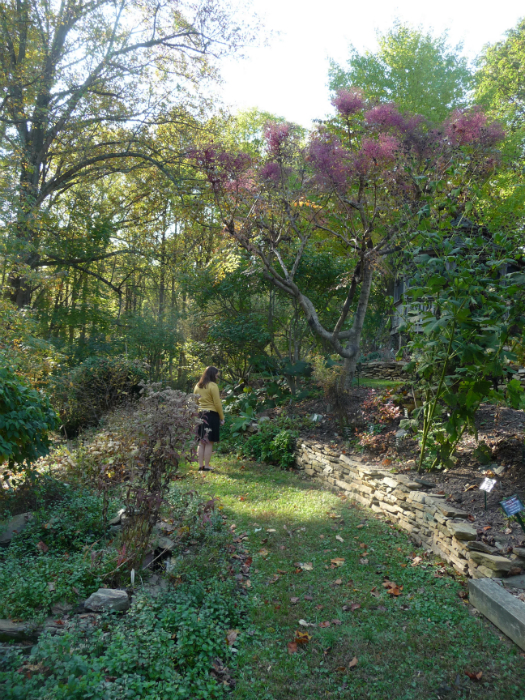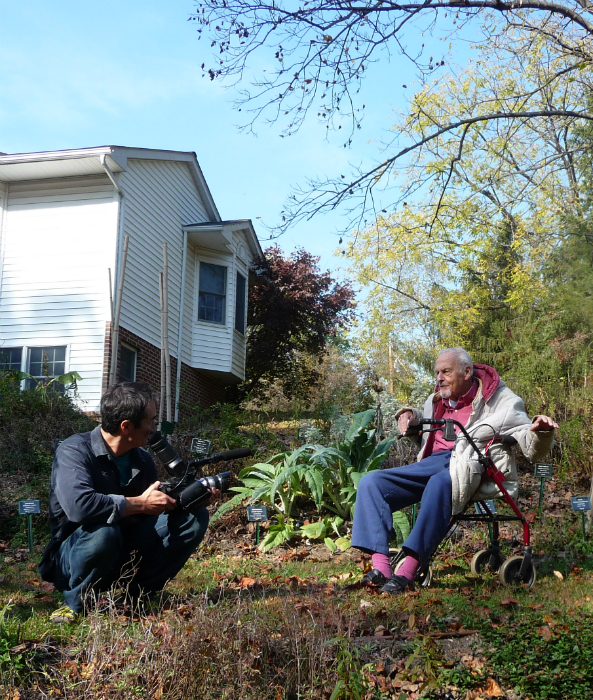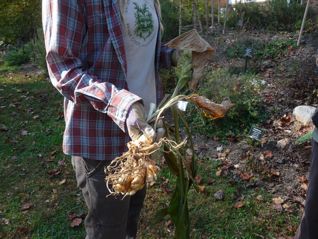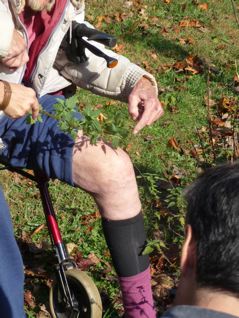The Culture of Herbal Medicine at the Green Farmacy Garden

In the spring of 2011, Smithsonian Center for Folklife and Cultural Heritage researchers visited medicinal herb specialist Dr. James Duke to discuss a possible future program about medical traditions (read an earlier blog about the garden).
The seasons have changed, but our interest in traditional medical knowledge and healing at CFCH is still very much alive. In October 2013, curator Betty Belanus, media specialist Charlie Weber, and I joined USDA representative Karen Malkin for an incredible afternoon at Dr. Duke’s house in Fulton, Maryland.
We began our trek from Virginia to Maryland on a beautiful fall morning. On the way, we discussed our intention to interview Dr. Duke about becoming a respected expert in what he calls “herbalizing.” We were also excited to tour his Green Farmacy Garden, an extensive collection of medicinal plants that Dr. Duke has organized by the diseases they can help treat.

After a wrong turn or two in rural Maryland, we arrived at the Dukes’ house, which serves many purposes: residence, office, art gallery, and site of the Green Farmacy Garden.
Dr. Duke greeted us in his office, surrounded by books and samples of herbal medicines in various containers. Before we arrived, he had been working on his personal database of plants and their bioactive substances. He set his work aside while we prepared our video equipment.
As we interviewed Dr. Duke, he recounted a fascinating journey that led to his current relationship with herbal medicine. He started with his interest in plants as a young boy, and discussed his work in Latin America with the USDA on tropical plants and medicines. Then he explained how he became an author, educator, and musician with the Green Farmacy Garden.

Dr. Duke displays a passion for sharing knowledge, and his connection to the medicines in his garden was evident—he politely but firmly stated his belief that herbs are better than pharmaceuticals several times. On a less serious note, he humored us with a spontaneous performance of his ginseng song.
After the interview, we took a lunch break next to the garden. We were joined by garden steward Helen Metzman, her assistant Sara Saurus, and Dr. Duke’s wife, Peggy, a botanical illustrator and photographer. They graciously shared what they call the “Duke Soup du Jour,” a vegetable soup that contains, on any given day, more than twenty vegetables and herbs with medicinal properties.

After lunch we toured the garden. Highlights included viewing Dr. Duke’s saffron crocuses, a demonstration of turmeric’s dyeing abilities, and an explanation of the potential use of stinging nettle plants for treating arthritis.
Dr. Duke and Helen shared many stories highlighting their connection to the healing and teaching potential of the garden.
We left the Duke house with more information about traditional medicines and a renewed interest in including the topic in future programming and educational materials. Stay tuned for updates on the potential medical traditions program, including more content from our visit to the Green Farmacy Garden!
Katie Fernandez is an undergraduate at the University of California, Santa Cruz with a major in anthropology and minor in education. This fall, as an intern at the Center for Folklife and Cultural Heritage, she worked on educational materials and evaluating the 2013 Folklife Festival.

